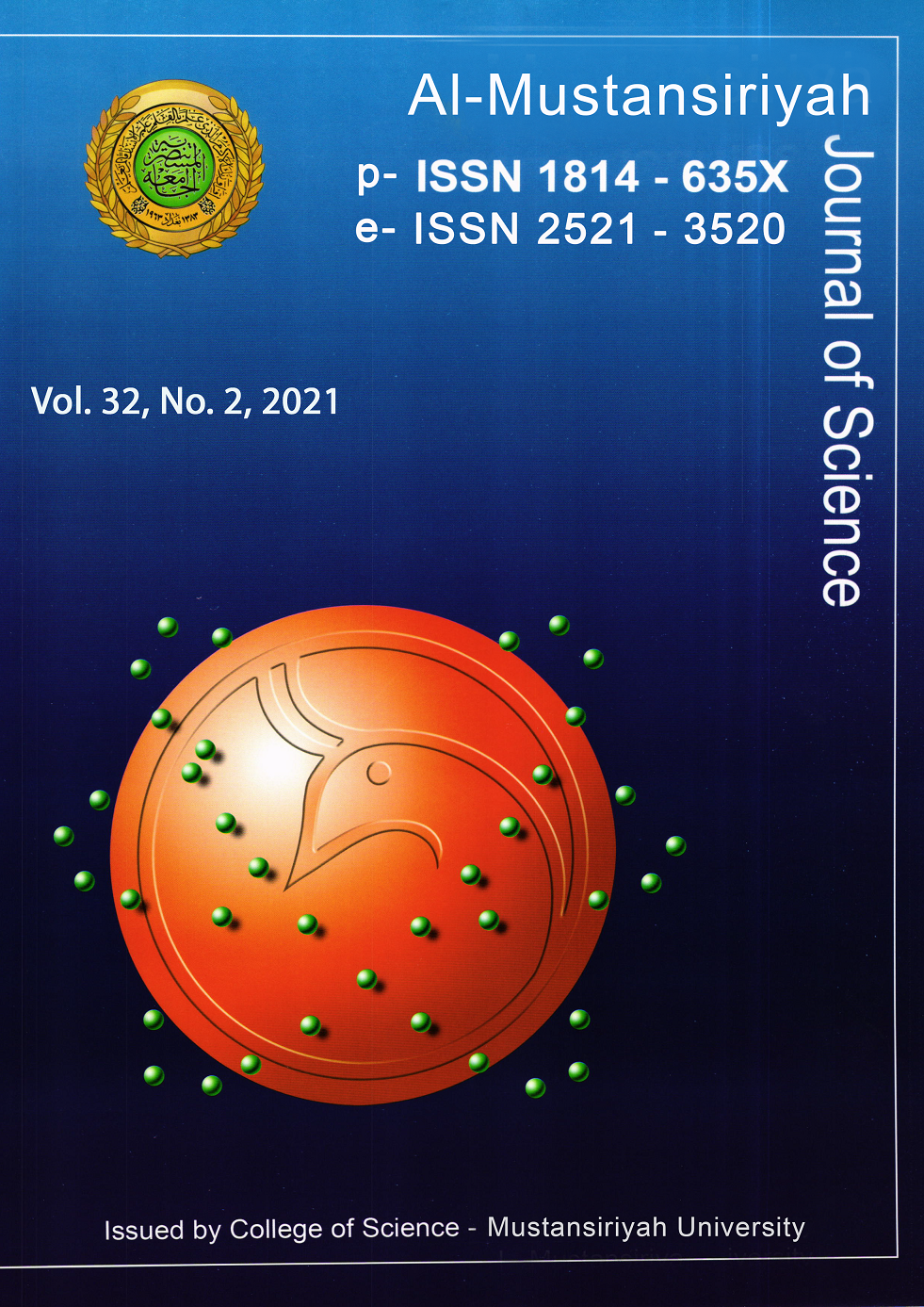Study The Relationship of Thermal Reflection Intensity with Its Height and Thickness
DOI:
https://doi.org/10.23851/mjs.v32i2.976Keywords:
Inversion, height, intensity, thicknessAbstract
Surface heat inversion (SHI) is important in determining the spread of pollutants in the lower part of the troposphere. This paper presents the relationship between heat inversion intensity and its height and thickness using the daily radiosonde data (midnight) of the period from (2013-2014) obtained from the Iraq Meteorological Organization and Seismology (IMOS). The results of the study were that heat inversion intensity increases with the increase in height in winter, summer, and autumn, during the spring, so there is no relationship. The relationship of heat inversion thickness with intensity is linear in spring, summer, and autumn, but inverse in winter.Downloads
References
N. B. Miller, D. D. Turner, R. Bennartz, M. D. Shupe, M. S. Kulie, M. P. Cadeddu, and V. P. Walden, "Surface-based inversions above central Greenland," J. Geophys. Res. Atmos., vol. 118, no. 2, p. 495-506, 2013.
Z. Yasmeen, "Inversion Layer and its Environmental Impact over Karachi," Pakistan J. Meteorol., vol. 7, no. 14, p. 53-62, 2012.
S. D. Z. F. Y. a. Z. Y. C. Y. H. Zhang, "Statistics of lower tropospheric inversions over the continental United States," Ann. Geophys., vol. 29, no. 2, p. 401-410, 2011.
S. R. Hudson, and R. E. Brandt, "A look at the surface-based temperature inver- sion on the antarctic plateau," J. of climate., vol. 18, no. 11, pp. 1673-1696, 2005.
J. Key, and Liu Y., "Detection and analysis of clear sky: low-level atmospheric temperature inversion with MODIS," J. Atoms. Oceanic Technol., vol. 20, pp. 1727-1737, 2003.
C. Ogg, "Aerial pest control for the commercial/ non-commercial pesticide applicator," International Journal of Climatology, 1992.
S. R. Al-Ghrybawi, and M. H. Al-Jiboori, "Study of surface heat inversions characteristics around Baghdad station," cientific Review - Engineering and Environmental Sciences, vol. 28, no. 4, pp. 610-618, 2019.
A. Milionis, and T. Davies, "The effect of the prevailing weather on the statistics of atmospheric temperature inversions," International Journal of Climatology, vol. 28, no. 10, p. 1385-1397, 2008.
B. Schwartz, and M. Govett, "Hydrostatically consistent North American radiosonde data base at the forecast systems laboratory, 1946-present," in NOAA Technical Memorandom ERL.PSL-4, NOAA Technical Memorandom ERL.PSL-4, 1992, p. 81.
S. Janhall, K. F. G. Olofson, P. U. Andersson, J. B. Pettersson, and M. Hallquist, "Evolution of the urban aerosol during winter temperature inversion episodes," Atmospheric Environment, vol. 40, no. 28, pp. 5355-5366, 2006.
Z. S. Kasim, "The characteristics the thermal inversion and its causes over Iraq," in Mustansiriyah University,College of Sciences, IRAQ,BAGHDAD, 1995.
Downloads
Key Dates
Published
Issue
Section
License
Copyright (c) 2021 Al-Mustansiriyah Journal of Science

This work is licensed under a Creative Commons Attribution 4.0 International License.
(Starting May 5, 2024) Authors retain copyright and grant the journal right of first publication with the work simultaneously licensed under a Creative Commons Attribution (CC-BY) 4.0 License that allows others to share the work with an acknowledgement of the work’s authorship and initial publication in this journal.






















